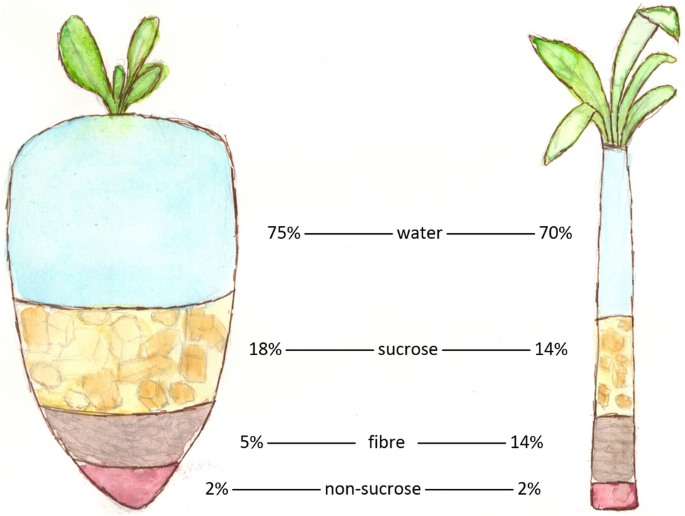Some people prefer beet sugar vs cane sugar for its supposed health advantages and natural quality.
Some people prefer beet sugar vs cane sugar for its supposed health advantages and natural quality.
Blog Article
Discover the Uses and Perks of Beet Sugar Vs Cane Sugar in Your Daily Diet Regimen
Discovering the distinct top qualities of beet and cane sugar reveals more than simply their sweetening abilities; it highlights their special effects on wellness and culinary arts. Beet sugar, recognized for its refined flavor, is typically preferred in fragile desserts, whereas cane sugar, with its hint of molasses, adds splendor to durable recipes. Each kind holds its own dietary profile and glycemic effects, inviting a much deeper understanding of their roles in a well balanced diet regimen and sustainable intake practices.
Origin and Manufacturing Procedures of Beet and Cane Sugar

The distinct climates and soil types required for growing sugar beetroots and sugarcane add to differences in their cultivation techniques and geographic circulation, influencing the economics and sustainability of their manufacturing. beet sugar vs cane sugar.
Nutritional Contrast In Between Beet Sugar and Cane Sugar
Regardless of originating from various plants, beet sugar and cane sugar are nutritionally really similar, both mostly containing sucrose. Each supplies regarding 4 calories per gram, translating to approximately 16 calories per tsp. Structurally, both sugars are made up of about 99.95% sucrose, with very little quantities of other substances like moisture and trace element, which do not significantly change their nutritional profiles.

Ultimately, when selecting in between beet sugar and cane sugar based on dietary content alone, both deal similar advantages and downsides as they are essentially types of the same molecule-- sucrose, supplying fast energy without various other nutrients.
Effect on Health: Glycemic Index and Caloric Content
Checking out additionally into the results of beet sugar and cane sugar on health and wellness, it is crucial to consider their glycemic index and Discover More Here calorie content. The glycemic index (GI) of both beet and cane sugar is around 65, classifying them as high-GI foods, which can trigger quick spikes in blood glucose degrees.
Each kind of sugar includes about 4 calories per gram, making their calorie material equivalent. For those keeping an eye on calorie consumption, particularly when managing weight or metabolic health and wellness problems, comprehending this equivalence is crucial (beet sugar vs cane sugar). Extreme intake of any high-calorie, high-GI food can contribute to wellness problems such as obesity, heart condition, and insulin resistance.
Environmental and Economic Considerations of Sugar Manufacturing
Beyond wellness effects, the manufacturing of beet and cane sugar additionally raises significant environmental and economic problems. Sugar he has a good point beet farming tends to call for cooler environments and has a lower geographical impact compared to sugar cane, which prospers in exotic regions.
Furthermore, the use of chemicals and plant foods in both beet and cane sugar growing can result in soil deterioration and air pollution, more influencing biodiversity and local water bodies (beet sugar vs cane sugar). The selection between growing sugar beet or cane commonly rests on neighborhood ecological conditions and financial factors, making the sustainability of sugar manufacturing a complicated problem
Culinary Applications and Flavor Differences
While the environmental and economic facets of sugar manufacturing are undoubtedly significant, the choice between beet and cane sugar also affects cooking applications and taste accounts. Beet sugar, acquired from the sugar beet plant, is understood for its extremely neutral taste.
Cane sugar, drawn out from sugarcane, frequently preserves molasses traces, which give an unique discover this info here splendor and deepness. This small molasses taste enhances the intricacy of baked products, sauces, and marinates. It is particularly preferred in items where a sugar touch is wanted, such as in brownies or gingerbread. The minor variant in moisture web content between beet and cane sugar can impact the appearance and consistency of dishes, making cane sugar a favored choice for particular dishes that benefit from its one-of-a-kind residential or commercial properties.

Final Thought
Finally, both beet and cane sugar have unique origins and manufacturing procedures, using comparable nutritional profiles with minor differences in salt content and flavor. While their impact on wellness, especially pertaining to glycemic index and calories, is comparable, the choice between them commonly boils down to ecological, financial variables, and details culinary demands. Recognizing these elements can guide consumers in making notified choices that straighten with their wellness objectives and flavor choices.
Report this page